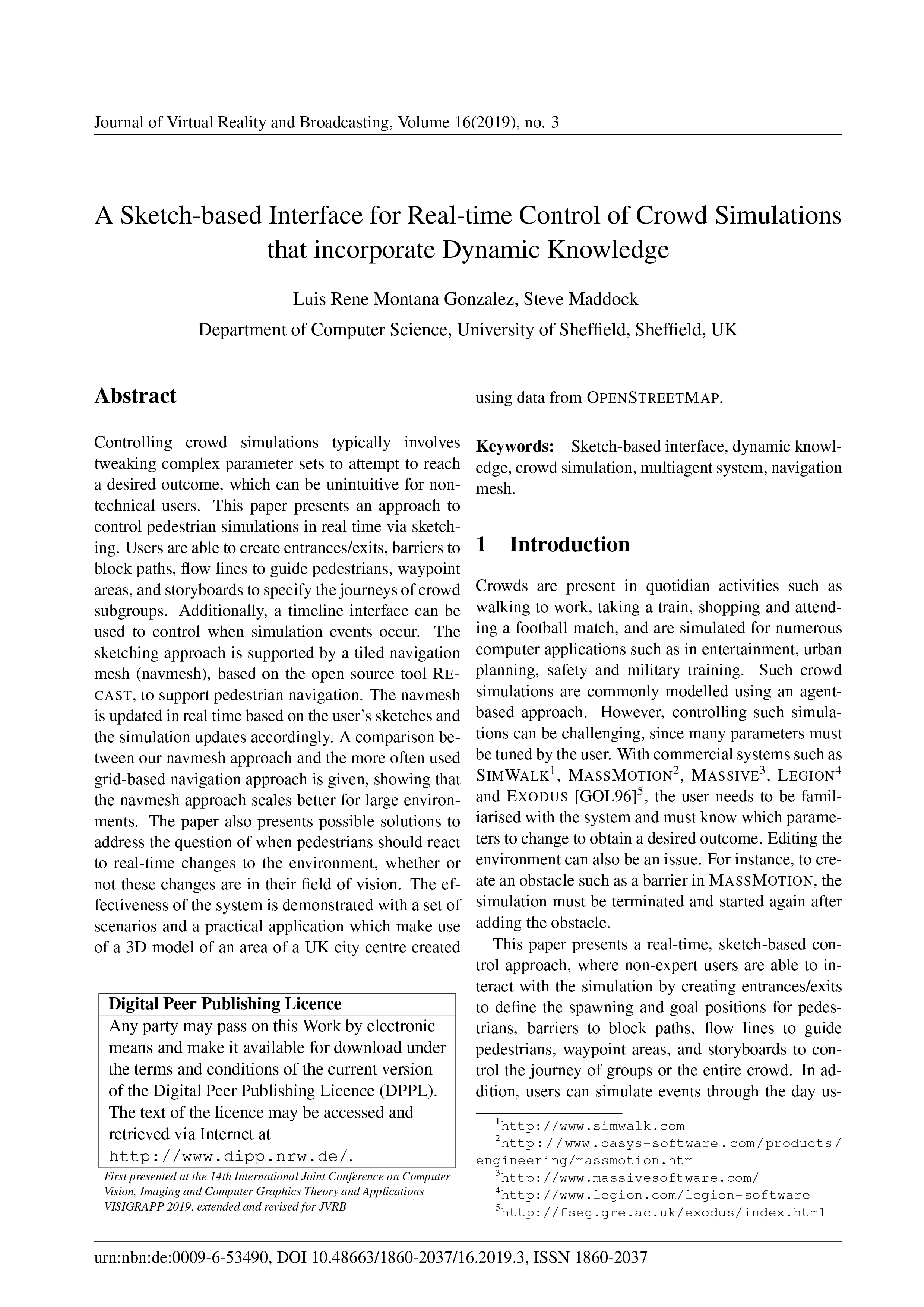A Sketch-based Interface for Real-time Control of Crowd Simulations that incorporate Dynamic Knowledge
DOI:
https://doi.org/10.48663/1860-2037/16.2019.3Keywords:
Crowd Simulation, Dynamic Knowledge, Multiagent System, Navigation Mesh, Sketch-Based InterfaceAbstract
Controlling crowd simulations typically involves tweaking complex parameter sets to attempt to reach a desired outcome, which can be unintuitive for non- technical users. This paper presents an approach to control pedestrian simulations in real time via sketching. Users are able to create entrances/exits, barriers to block paths, flow lines to guide pedestrians, waypoint areas, and storyboards to specify the journeys of crowd subgroups. Additionally, a timeline interface can be used to control when simulation events occur. The sketching approach is supported by a tiled navigation mesh (navmesh), based on the open source tool RE- CAST, to support pedestrian navigation. The navmesh is updated in real time based on the user’s sketches and the simulation updates accordingly. A comparison between our navmesh approach and the more often used grid-based navigation approach is given, showing that the navmesh approach scales better for large environments. The paper also presents possible solutions to address the question of when pedestrians should react to real-time changes to the environment, whether or not these changes are in their field of vision. The effectiveness of the system is demonstrated with a set of scenarios and a practical application which make use of a 3D model of an area of a UK city centre created using data from OPENSTREETMAP.
Downloads
Published
2021-08-10
Issue
Section
VISIGRAPP 2019





